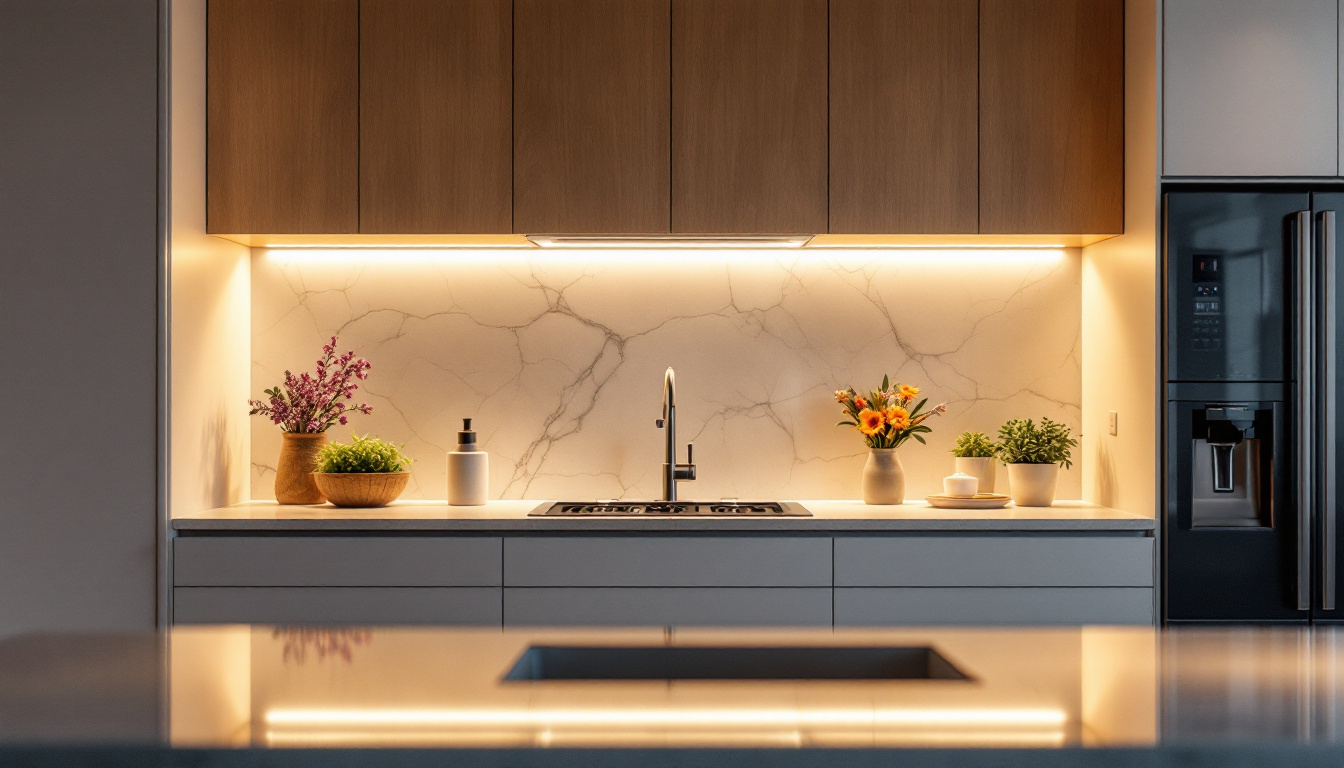

In today’s world, energy efficiency and security are paramount considerations for homeowners and businesses alike. Motion detector lights have emerged as a popular solution, combining convenience with advanced technology. For lighting contractors, understanding the ins and outs of these systems is essential for delivering value to clients. This article delves into the various aspects of motion detector lights that every lighting contractor should be familiar with.
Motion detector lights utilize various technologies to detect movement and activate lighting systems. The most common types include passive infrared (PIR), microwave, and dual technology sensors. Each type has its unique advantages and applications.
PIR sensors are the most widely used motion detectors. They work by detecting changes in infrared radiation, which is emitted by warm bodies, such as humans and animals. When a moving object enters the sensor’s field of view, the change in infrared radiation triggers the light to turn on.
These sensors are particularly effective in outdoor settings, where they can cover a broad area. However, they have limitations, such as being less effective in detecting motion through glass or in areas with significant temperature fluctuations. Additionally, PIR sensors are often designed with adjustable sensitivity settings, allowing users to customize their performance based on specific environmental conditions. This adaptability makes them a popular choice for residential applications, where homeowners can fine-tune the sensors to avoid unnecessary activation from pets or passing wildlife.
Microwave sensors operate by emitting microwave signals and measuring the reflection off moving objects. They can detect motion through walls and other obstacles, making them suitable for various applications, including indoor and outdoor settings.
While microwave sensors are more sensitive and can cover larger areas than PIR sensors, they can also be more prone to false alarms, especially in environments with a lot of movement, such as busy streets or crowded areas. To mitigate this issue, many modern microwave sensors come equipped with advanced algorithms that filter out non-threatening movements, ensuring that only significant motion triggers the lighting system. This feature is particularly advantageous in commercial spaces, where maintaining a secure environment is paramount, and minimizing disruptions is essential for operational efficiency.
As the name suggests, dual technology sensors combine both PIR and microwave technologies. This combination allows for greater accuracy and reduces the likelihood of false alarms. The lights will only activate when both sensors detect movement, making them a reliable choice for contractors aiming to provide clients with enhanced security.
These sensors are particularly beneficial in commercial settings, where the risk of false alarms can lead to unnecessary costs and disruptions. Furthermore, dual technology sensors can be integrated into larger security systems, providing comprehensive coverage and the ability to monitor multiple zones simultaneously. This integration not only enhances security but also allows for sophisticated automation, such as adjusting lighting based on occupancy levels or time of day, ensuring that spaces are well-lit when needed while conserving energy when they are not in use. As technology continues to evolve, the applications for dual technology sensors are expanding, paving the way for smarter, more responsive environments.
Motion detector lights offer numerous advantages that make them an attractive option for both residential and commercial installations. Understanding these benefits can help lighting contractors effectively communicate their value to clients.
One of the most significant benefits of motion detector lights is their energy efficiency. These lights only activate when motion is detected, reducing energy consumption compared to traditional lighting systems that remain on continuously.
This feature not only lowers electricity bills but also contributes to a more sustainable approach to lighting. For clients concerned about their environmental impact, highlighting the energy-saving potential of motion detector lights can be a compelling selling point.
Another critical advantage is the enhanced security that motion detector lights provide. By illuminating areas when movement is detected, these lights can deter potential intruders and increase safety for homeowners and businesses.
Lighting contractors can emphasize the importance of well-lit entryways, driveways, and outdoor spaces in preventing crime and ensuring peace of mind for clients. Installing these lights can significantly enhance the overall security of a property.
Motion detector lights add a level of convenience that traditional lighting systems cannot match. Homeowners no longer need to fumble for switches in the dark; the lights activate automatically when they approach.
This feature is especially beneficial for outdoor areas, where users may have their hands full or be navigating in low-light conditions. Additionally, many modern motion detector lights can be integrated with smart home systems, allowing for remote control and customization, which is a selling point for tech-savvy clients.
For lighting contractors, proper installation of motion detector lights is crucial to ensure optimal performance. There are several key factors to consider during the installation process.
The placement of motion detector lights is vital for maximizing their effectiveness. Contractors should assess the area to determine the optimal location for sensors, ensuring they cover the desired space without obstructions.
It’s essential to consider factors such as the height of installation, the angle of the sensor, and potential obstacles like trees or walls that could block the sensor’s field of view. Proper placement will minimize false alarms and ensure reliable operation.
Motion detector lights can be hardwired or battery-operated. For contractors, understanding the power requirements and wiring options is essential for a successful installation.
Hardwired systems often provide more reliability and longevity, while battery-operated lights offer flexibility in placement without the need for extensive wiring. Contractors should assess the specific needs of each client and the installation environment to recommend the best option.
Most motion detector lights come with adjustable sensitivity and timing settings. Contractors should familiarize themselves with these features to ensure that the lights operate according to the client’s preferences.
Adjusting the sensitivity can help reduce false alarms caused by small animals or environmental factors, while timing settings can determine how long the lights remain on after detecting motion. Properly configuring these settings can enhance user satisfaction and system performance.
While motion detector lights offer numerous benefits, they can also present challenges during installation and use. Understanding these challenges allows lighting contractors to provide better service and solutions to clients.
False alarms are one of the most common issues associated with motion detector lights. Factors such as pets, moving branches, or passing vehicles can trigger the lights unnecessarily.
To mitigate this, contractors can recommend models with adjustable sensitivity settings or install dual technology sensors that require activation from both PIR and microwave technologies. Educating clients about proper placement and environmental considerations can also help reduce false alarms.
Another challenge is the limited detection range of some motion detectors. Depending on the model, the effective range can vary significantly, which may not cover larger areas adequately.
Contractors should assess the specific needs of the client and recommend appropriate models based on the area that needs coverage. In some cases, installing multiple lights may be necessary to ensure comprehensive coverage.
Environmental factors such as temperature fluctuations, humidity, and even insects can affect the performance of motion detector lights. For instance, extreme cold can impact battery life, while humidity can cause condensation that interferes with sensor functionality.
Contractors should advise clients on the best practices for maintaining their motion detector lights, including regular cleaning and battery checks, to ensure optimal performance regardless of environmental conditions.
As technology continues to evolve, so too do motion detector lights. Staying informed about emerging trends can help lighting contractors remain competitive and offer cutting-edge solutions to clients.
One of the most significant trends in motion detector lighting is the integration of smart technology. Many modern systems can now connect to home automation platforms, allowing users to control their lights remotely via smartphones or voice-activated assistants.
This integration not only enhances convenience but also allows for advanced features such as scheduling, remote monitoring, and even integration with security cameras. Contractors should consider offering smart motion detector lights as part of their services to meet the growing demand for connected home solutions.
The shift towards energy-efficient LED lighting is another trend that contractors should embrace. LED motion detector lights consume significantly less energy than traditional incandescent or halogen bulbs, making them a more sustainable choice.
As clients become increasingly eco-conscious, offering LED options can enhance a contractor’s appeal and align with the growing trend of energy-efficient home improvements.
Future motion detector lights are likely to incorporate advanced detection features, such as facial recognition or object tracking. These technologies can provide enhanced security and customization options for users.
Staying informed about these advancements will allow contractors to offer the latest solutions, ensuring they remain at the forefront of the lighting industry.
Motion detector lights represent a significant opportunity for lighting contractors to provide enhanced security, energy efficiency, and convenience to clients. By understanding the technology, benefits, installation considerations, and emerging trends, contractors can position themselves as knowledgeable experts in the field.
As the demand for smart, efficient lighting solutions continues to grow, staying informed and adaptable will be key to success in this evolving market. By embracing the potential of motion detector lights, contractors can help clients illuminate their spaces while ensuring safety and sustainability.
Ready to elevate your lighting projects with the latest in motion detector technology? Look no further than LumenWholesale, where we provide lighting contractors with superior, spec-grade lighting products at unbeatable wholesale prices. Our commitment to quality and affordability means you can offer your clients the best in energy efficiency, security, and convenience without breaking the bank. Plus, with free shipping on bulk orders, you can stock up on high-performance lighting solutions and pass the savings on to your clients. Don’t let hidden fees dim your project’s potential. Choose LumenWholesale for a seamless blend of quality, affordability, and hassle-free service. Wholesale Lighting at the Best Value is just a click away.

Discover why purchasing ballasts and drivers in bulk from local distributors might not be the best choice.

Discover why lighting contractors should prioritize outdoor walkway lights in their projects.

Discover the essential insights lighting contractors need to know about under cabinet lights.

Discover why LED emergency lights are essential for any lighting project.
Get notified when NEW deals are released.
Optimize your budget with wholesale discounts.
Only top-quality, specification-grade lighting products.
No additional costs at checkout - what you see is what you pay.
We understand the unique needs of contractors.